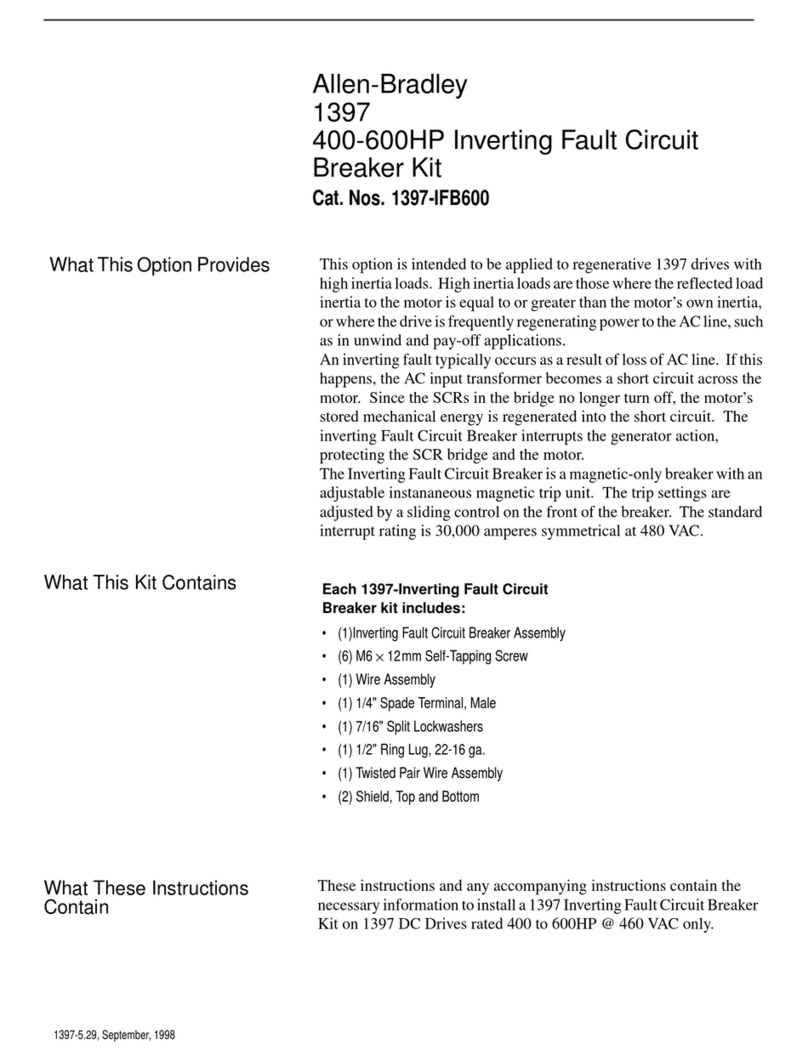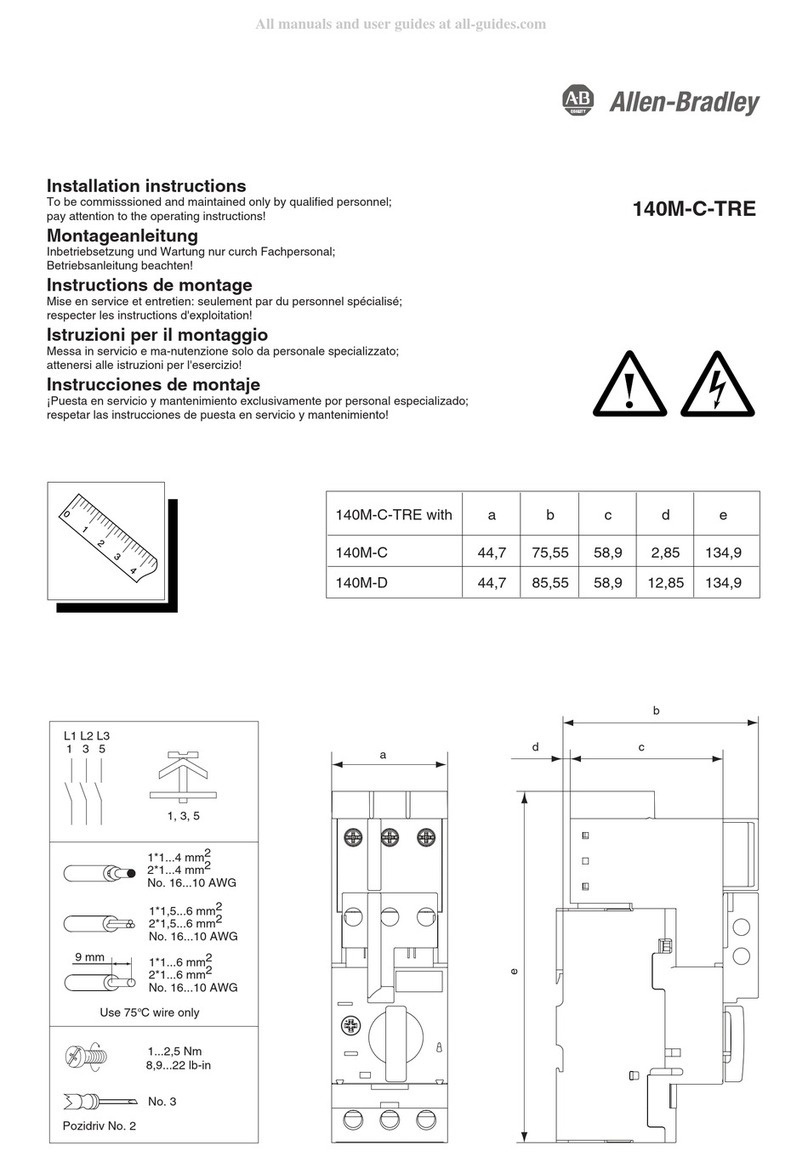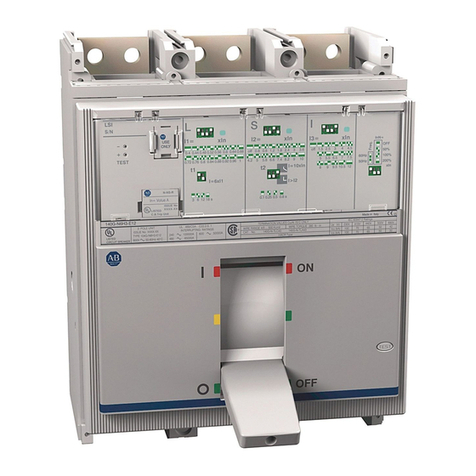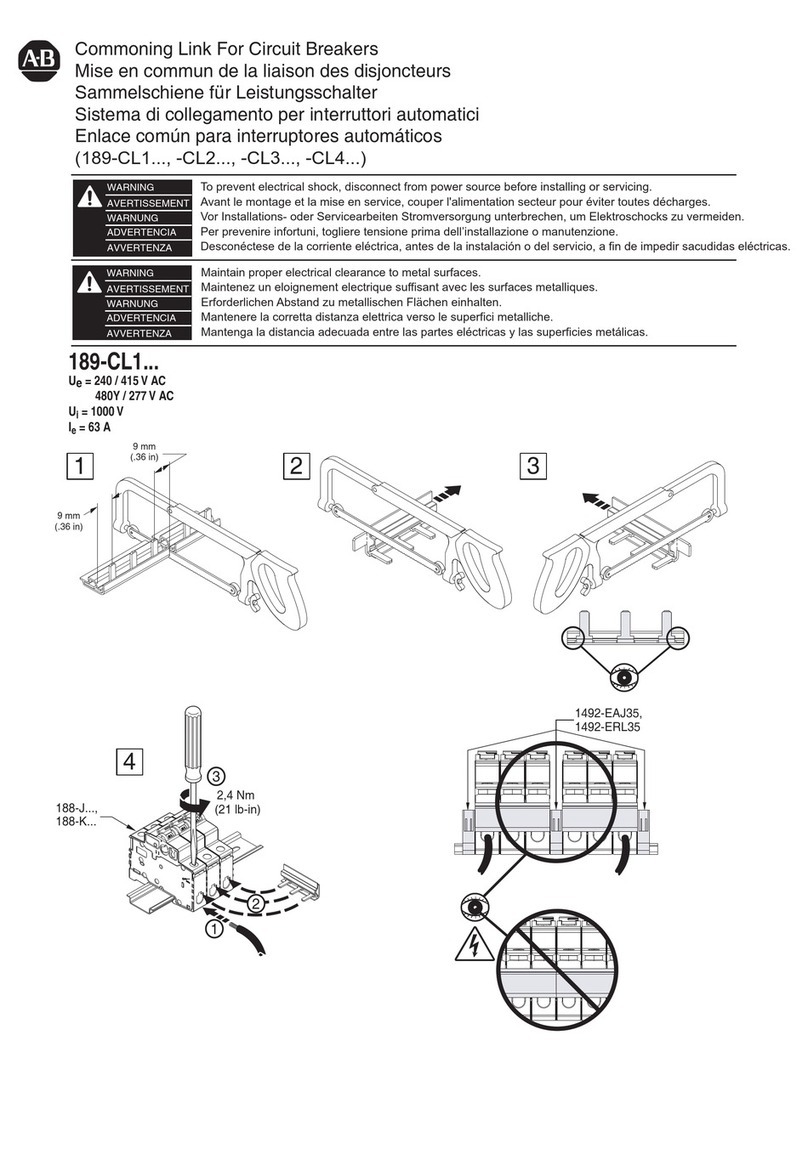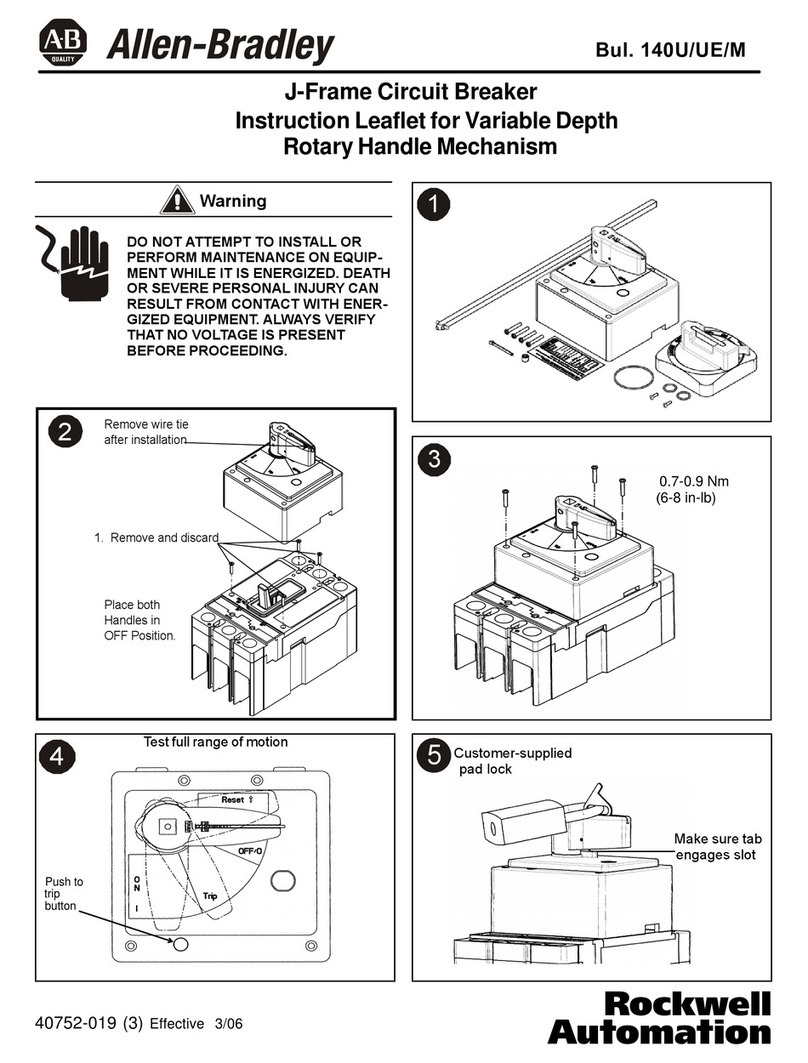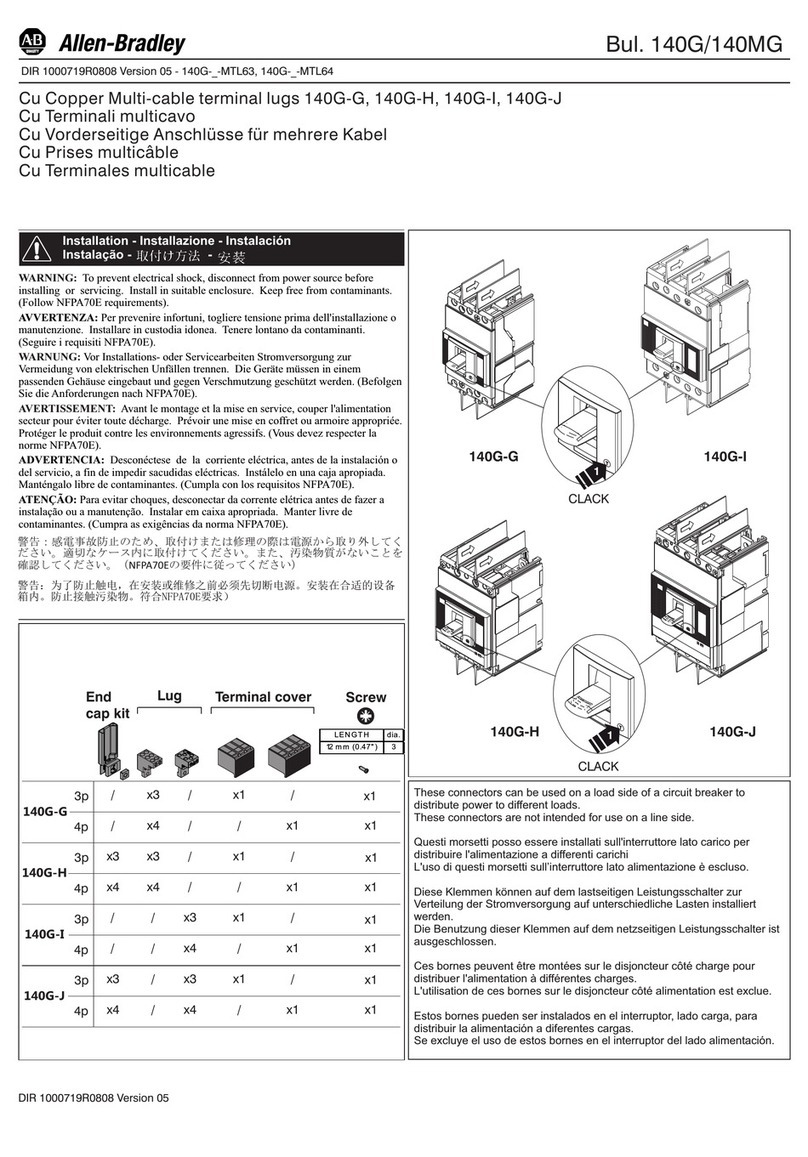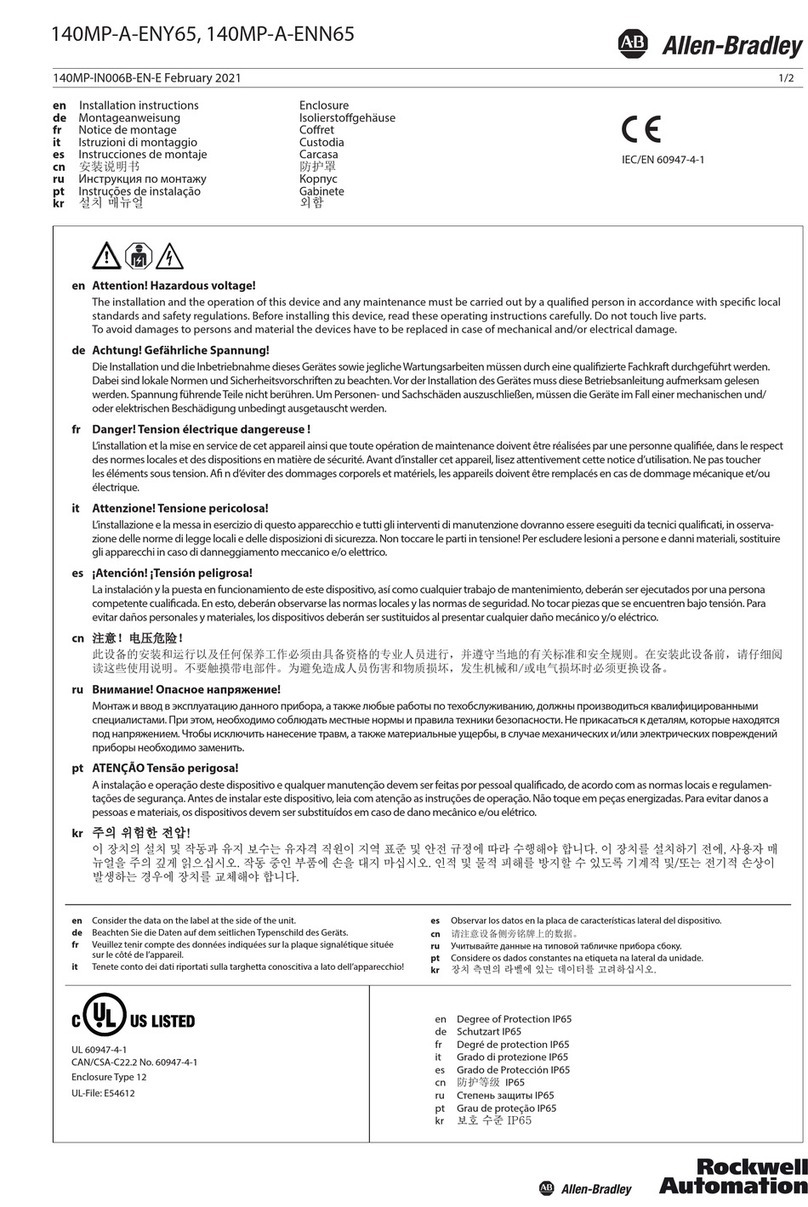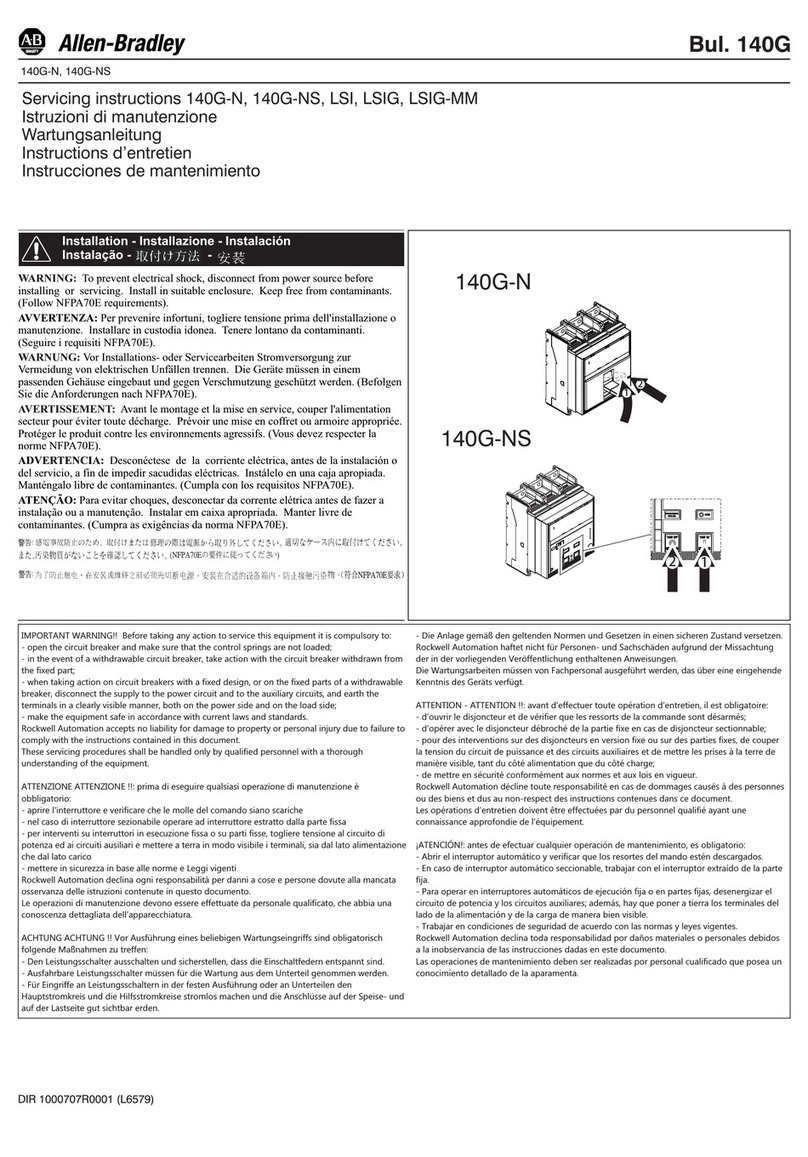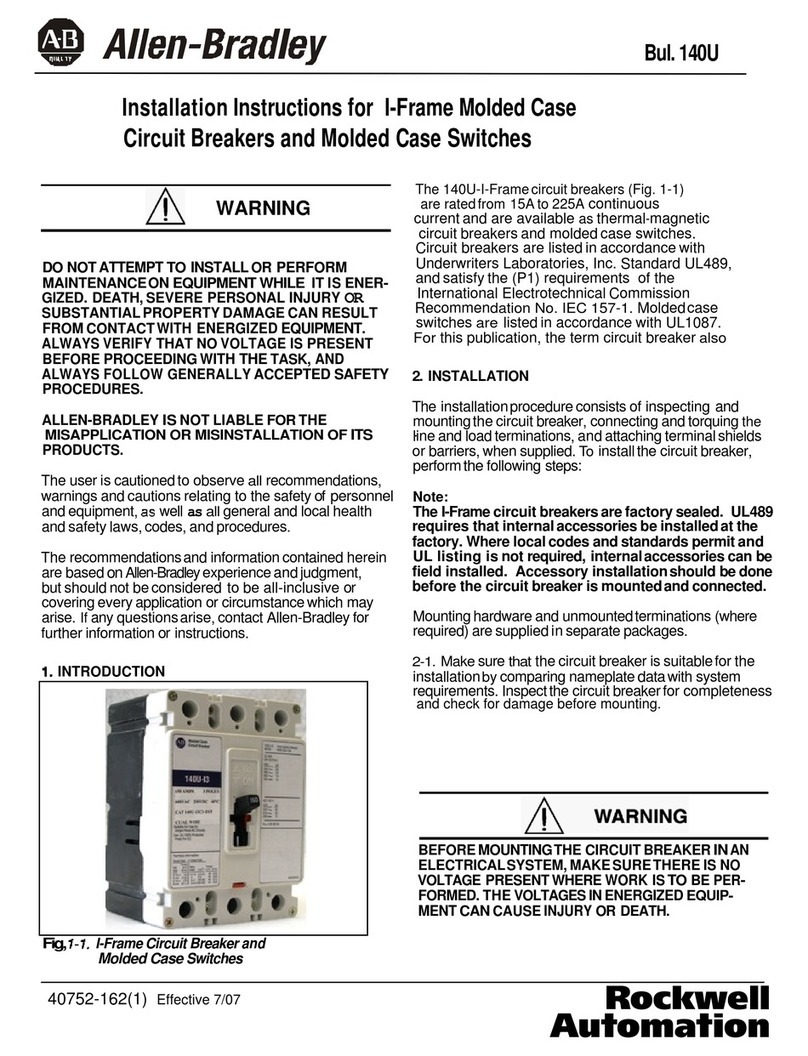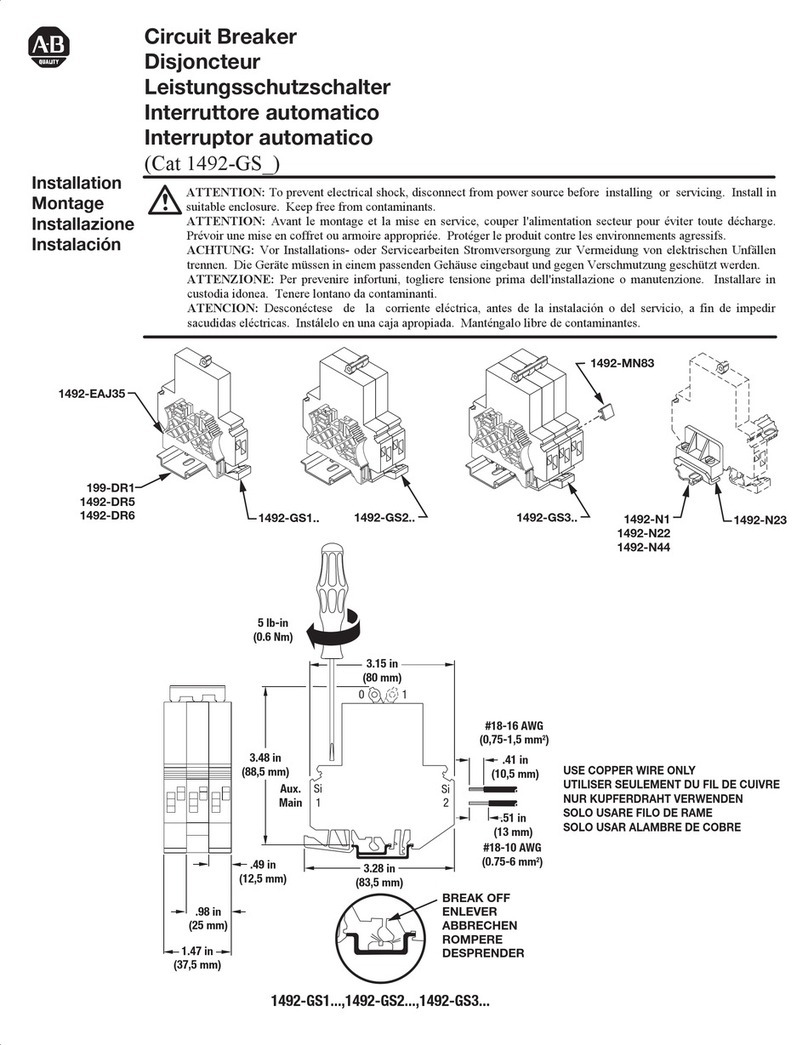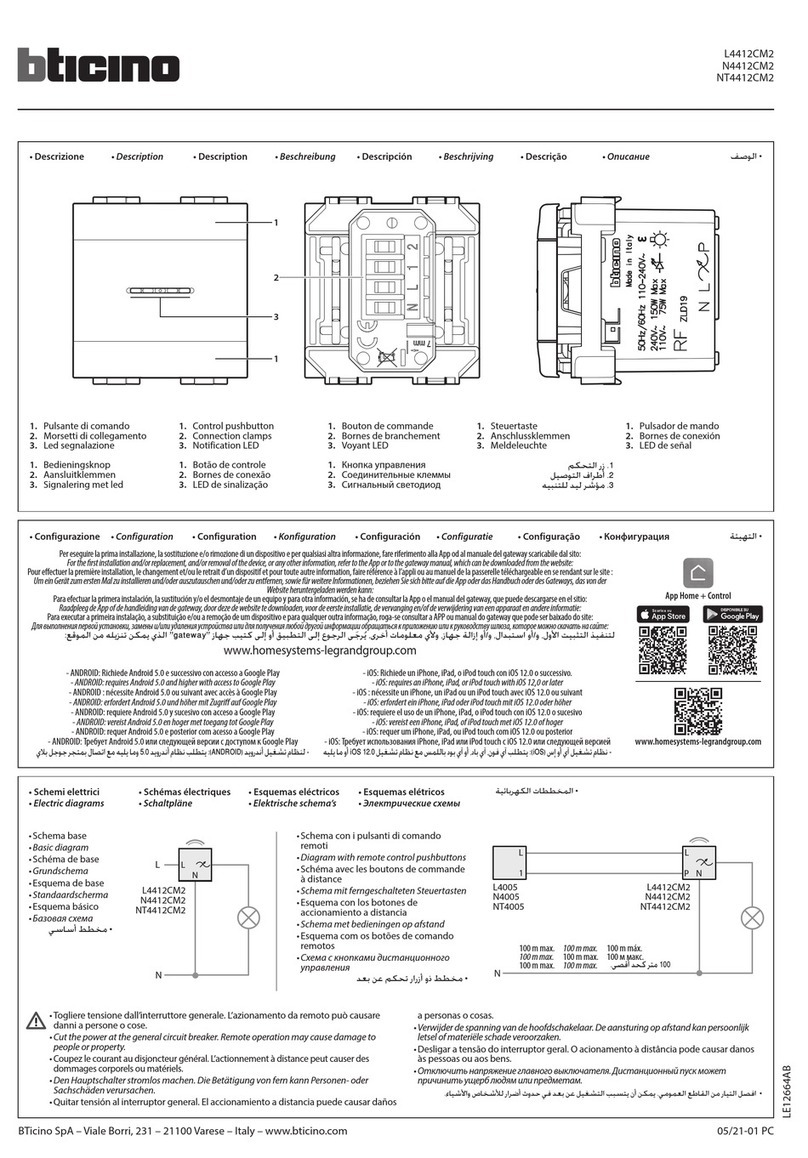
6
40752-195 (1) 2/2011
VOLTAGE IN ENERGIZED EQUIPMENT CAN CAUSE
DEATH OR SEVERE PERSONAL INJURY. BEFORE
MOUNTING THE CIRCUIT BREAKER IN AN ELECTRI-
CAL SYSTEM MAKE SURE THERE IS NO VOLTAGE
PRESENT WHERE WORK IS PERFORMED. SPECIAL
ATTENTION SHOULD BE PAID TO REVERSE FEED AP-
PLICATIONS TO ENSURE NO VOLTAGE IS PRESENT.
To mount the circuit breaker, perform the following steps:
1200A Front Connect Circuit
Breakers
a. For individual surface mounting, drill mounting panel
using the drilling plan shown in Figure 2-5. For dead front
cover applications, cut out cover to correct escutcheon
dimensions, see Figure 2-6.
internal accessories, make sure the accessory wiring can
be reached when the circuit breaker is mounted.
Note: Labels with accessory connection schematic
diagrams are provided on the side of the circuit break-
er. A note should be made of the diagrams if the labels
cannot be seen when the circuit breaker is mounted.
c. Position the circuit breaker on the mounting surface.
d. Secure the circuit breaker with the supplied hardware
CAUTION
OVERHEATING CAN CAUSE NUISANCE TRIPPING
AND DAMAGE TO THE CIRCUIT BREAKER. WHEN
ALUMINUM CONDUCTORS ARE USED, THE APPLICA-
TION OF A SUITABLE JOINT COMPOUND IS RECOM-
MENDED TO REDUCE THE POSSIBILITY OF TERMI-
NAL OVERHEATING.
Connect line and load conductors and accessory leads. If
the circuit breaker includes ground fault protection, connect
the neutral current sensor and ground fault alarm unit as
.
HAZARDOUS VOLTAGE CONDITIONS CAN CAUSE
DEATH OR SEVERE PERSONAL INJURY. MAINTAIN
ORIGINAL ELECTRICAL CLEARANCE AND CREEPAGE
SPACINGS AT TERMINATIONS .
After the circuit breaker is installed and all connections are
made, check all mounting hardware and terminal connec-
tion hardware for torque loading. Torque values for line/
load terminal lugs are given on table in Figure 2-1. Torque
mounting screws to 30-35 lb-ft. (41-47 Nm).
Re-install load end and line end covers and secure with
pan head screws provided. Torque large screws to 35-45
lb.-in. (4.0-5.0 Nm) and small screws to 24-30 lb-in. (2.7-3.4
Nm). When using the terminals TA700NB1 or T700NB1,
or when prospective fault currents of cabled installations
exceed 65kA, (such as NDC applications), the conductors
are to be braced in accordance with Figure 2-9.
CAUTION
CAUTION
UNSUPPORTED CABLES CAN CAUSE MINOR PER-
SONAL INJURY OR EQUIPMENT DAMAGE UNDER
SHORT CIRCUIT CONDITIONS.
Wrap conductor cables with 3/8” nylon or equivalent
rope as shown in Figure 2-9, having a minimum tensile
strength of 2000 lbs., at 6” from terminals and every ad-
ditional 6” with 5 wraps or every additional 1” with 1 wrap.
2.6. Adjusting Trip Settings
The N-frame circuit breakers have the trip unit built in as
an integral part of the breaker. The trip unit is not field
replaceable. The various trip unit settings are described
in section 4. They should be adjusted as required
at this point.
2.4 Mounting
2.5 Connecting Line and Load Conductors
